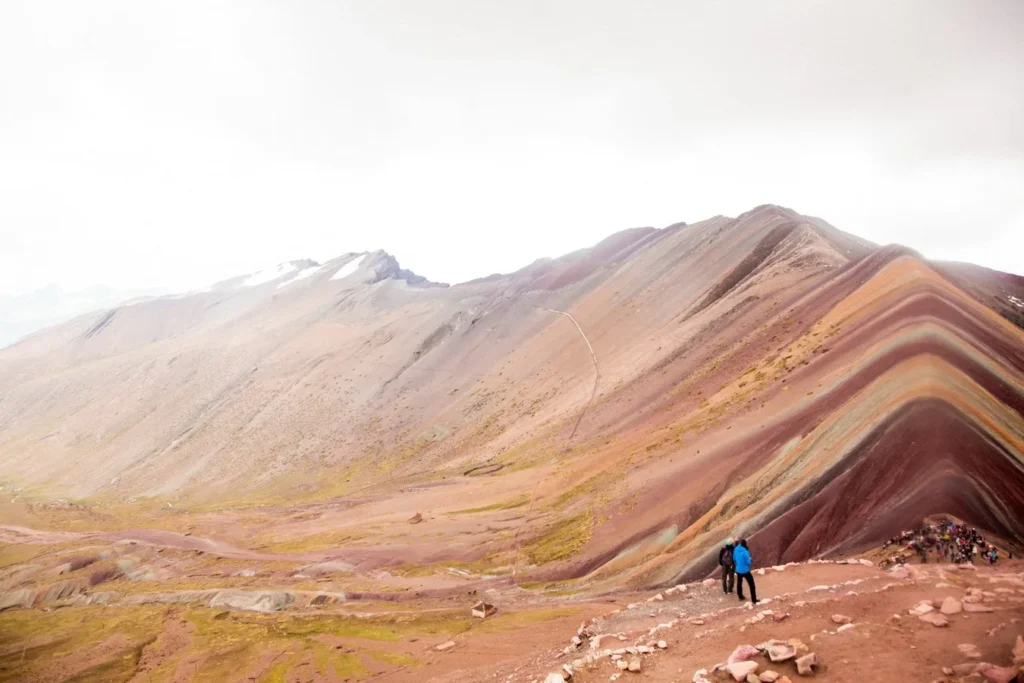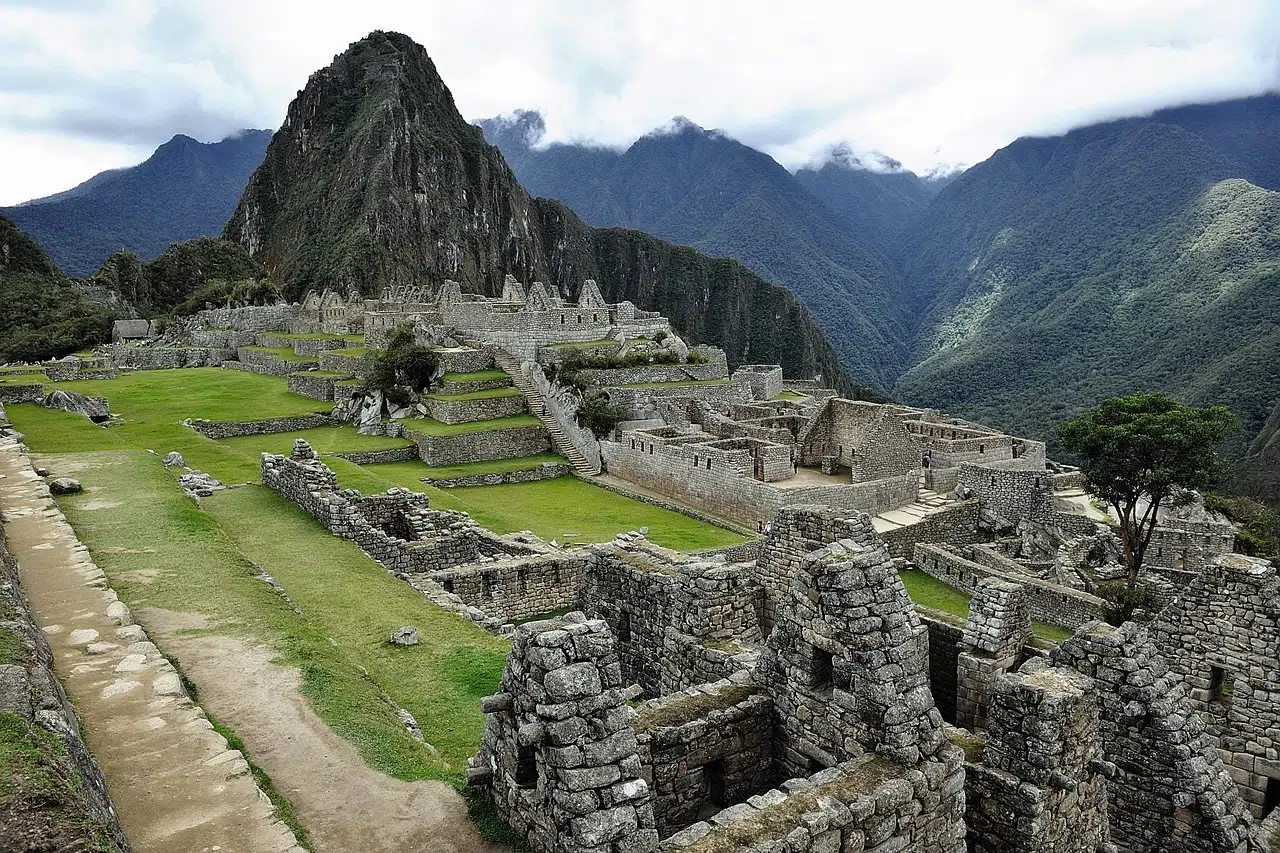The temperature at Rainbow Mountain is as unpredictable as its colorful slopes—one moment you’re squinting under intense Andean sunlight, the next you’re bracing against icy winds that cut through your layers. During my pre-dawn hike to Vinicunca, I watched the thermometer swing from freezing -5°C (23°F) at sunrise to a deceptively warm 15°C (59°F) by midday, only to plunge again when storm clouds rolled in.
These extreme temperature swings aren’t just uncomfortable—they can turn an awe-inspiring adventure into a challenging ordeal if you’re unprepared. In this guide, I’ll share hard-won insights about:
- Seasonal temperature variations you must anticipate
- The truth about wind chill at 5,200 meters
- My layered clothing system that saved me from hypothermia
- How weather affects those famous rainbow hues
Whether you’re planning a sunrise summit or afternoon exploration, understanding Rainbow Mountain’s mercurial climate is the key to staying safe while capturing those perfect, crowd-free photos. Let’s ensure your only surprises are pleasant ones when facing nature’s most colorful thermometer test.
Rainbow Mountain, or Vinicunca, sits at an impressive altitude of over 5,000 meters (16,400 feet) in the Peruvian Andes. Due to this elevation, the temperature can be cold and unpredictable, changing significantly throughout the day. This guide covers everything from average temperatures to packing tips and strategies for handling sudden weather changes.
Table of Contents
Average Temperatures at Rainbow Mountain Throughout the Year
The weather at Rainbow Mountain is primarily influenced by its high altitude rather than seasonal changes. While the region has both a dry and a wet season, temperatures remain relatively consistent throughout the year.
- Dry Season (May to October): Daytime temperatures range between 5°C and 12°C (41°F to 54°F), but mornings and nights can drop as low as -5°C (23°F).
- Wet Season (November to April): Temperatures are similar, though daytime temperatures may feel warmer due to increased humidity. However, rain, hail, and snow are more frequent, with daytime temperatures ranging from 4°C to 10°C (39°F to 50°F).
It’s essential to remember that even on warmer days, the weather can shift rapidly, so always prepare for colder temperatures.
You can also read:
- The Ultimate Guide to Humantay Lake Cusco: Everything You Need to Know for Your Adventure
- Waqrapukara Cusco: The Complete Guide to Peru’s Hidden Inca Fortress
- The Ultimate Guide to Rainbow Mountain Cusco, Peru: Everything You Need to Know
- Palcoyo Cusco: The Complete Guide to the Alternative Rainbow Mountain

Ride an ATV to Rainbow Mountain – Adventure Awaits! 🌄
Skip the long hike and explore Rainbow Mountain on an ATV for an adrenaline-filled experience! Ride through scenic Andean valleys and reach the summit with ease. Secure your spot on this thrilling ATV tour today!
How the Temperature Changes as You Climb
As you ascend Rainbow Mountain, temperatures typically drop due to the increased altitude. This means that conditions at the base will often feel warmer than those near the summit, where the temperature can feel several degrees colder. Windchill is also a factor at higher elevations, as the lack of natural windbreaks amplifies the cold.
- Base of the Trail (4,600 meters/15,100 feet): Expect temperatures of 5-10°C (41-50°F) during the day in the dry season.
- Mid-Trek: As you ascend, temperatures may drop by several degrees, and winds can pick up.
- Summit (5,200 meters/17,060 feet): Temperatures can feel close to freezing, particularly with windchill. On windy days, it may feel even colder, so be prepared to layer up.
What to Wear Based on the Season
Dressing appropriately for the conditions is essential for a comfortable and safe trek. Here are some recommendations on what to wear based on the season.
Dry Season (May to October)
The dry season has fewer chances of rain, but temperatures can be extremely cold, especially in the mornings and at the summit.
- Base Layer: Moisture-wicking long-sleeved shirt to keep sweat away from your skin.
- Insulating Layer: Fleece or down jacket for warmth as temperatures drop higher up.
- Outer Layer: A windproof, waterproof jacket for wind and cold protection.
- Bottoms: Quick-dry hiking pants with thermal leggings if you’re sensitive to cold.
- Accessories: Gloves, a beanie, a scarf, and sunglasses for UV protection at high altitude.
Wet Season (November to April)
While the wet season can feel slightly warmer during the day, rain and even hailstorms are frequent, so waterproof clothing is a must.
- Base Layer: Similar to the dry season, opt for moisture-wicking clothing.
- Insulating Layer: Warm mid-layer, like a fleece, to keep you insulated during cold spells.
- Outer Layer: Waterproof jacket and pants are essential to stay dry during sudden rain or hail.
- Accessories: A waterproof hat, gloves, and sunglasses are helpful; bring a rain cover for your backpack.

Hike to the Breathtaking Rainbow Mountain! 🌈
Embark on an unforgettable trekking adventure to Vinicunca (Rainbow Mountain) and witness its stunning natural colors. Challenge yourself, immerse in Andean landscapes, and capture breathtaking views. Book your Rainbow Mountain tour today!
How to Stay Warm During the Trek
Staying warm during the trek is essential to ensure comfort and safety, as exposure to cold temperatures can lead to hypothermia, especially in wet and windy conditions.
- Layer Up: Layering allows you to adjust to temperature changes. Remove layers if you’re too warm to avoid sweating, which can make you colder when you stop.
- Keep Moving: Regular movement keeps your body temperature up. Rest breaks are essential but avoid standing still for too long at high elevations.
- Protect Extremities: Cold air targets the hands, feet, and head, so wear gloves, warm socks, and a hat.
- Use Hand Warmers: Chemical hand warmers can be handy, especially if you’re prone to cold hands or feet.
Rainbow Mountain Weather: What to Expect Throughout the Year
The weather at Rainbow Mountain (Vinicunca) is as impressive as it is unpredictable due to its high altitude, located more than 5,000 meters above sea level. Temperatures can vary drastically during the day, going from cool and pleasant temperatures during midday to very cold conditions at dawn and dusk. It is crucial to know the weather variations at Rainbow Mountain in order to plan your visit and ensure a safe and comfortable experience.
What to Do in Case of Sudden Weather Changes
Rainbow Mountain’s weather is highly unpredictable, with sudden rain, snow, or windstorms possible even during the dry season. Here are some strategies to handle sudden shifts in weather:
- Always Pack Waterproof Layers: Even in the dry season, a waterproof jacket and pants are essential.
- Use a Weather App Before Departure: Checking the weather forecast the night before can help you plan, though always be ready for rapid shifts.
- Bring a Backpack Cover: Protect your gear from unexpected downpours by using a waterproof backpack cover.
- Stay Hydrated and Energized: Cold temperatures can mask dehydration, so drink water regularly. Snacks like nuts and dried fruit will help maintain energy levels.
- Descend Quickly if Needed: If a storm approaches or temperatures drop suddenly, consider descending to a lower elevation where conditions may be less harsh.
Conclusion:
Preparing for the temperature at Rainbow Mountain requires layers, awareness of altitude effects, and readiness for sudden weather changes. By understanding average temperatures, dressing appropriately, and planning for the unexpected, you’ll be equipped for a successful and enjoyable trek to this magnificent Peruvian landmark.



